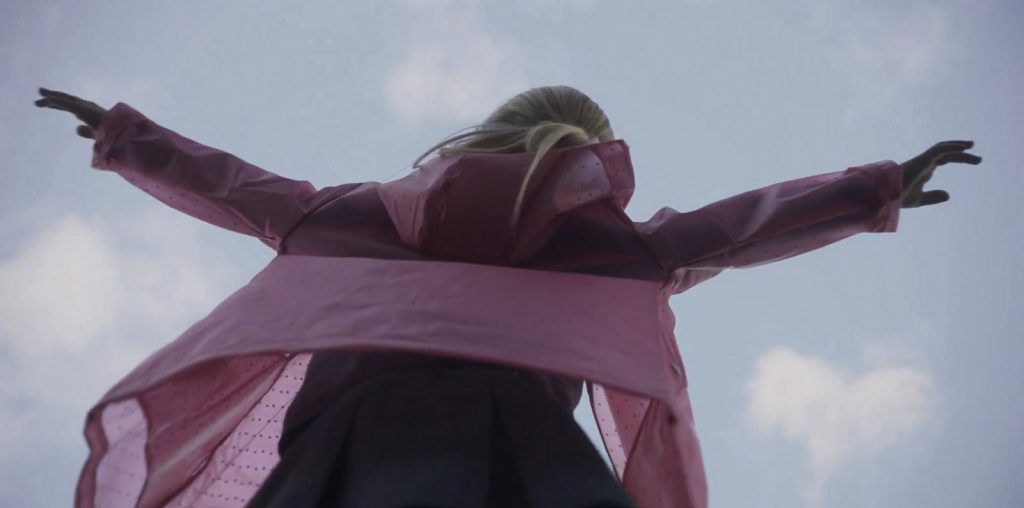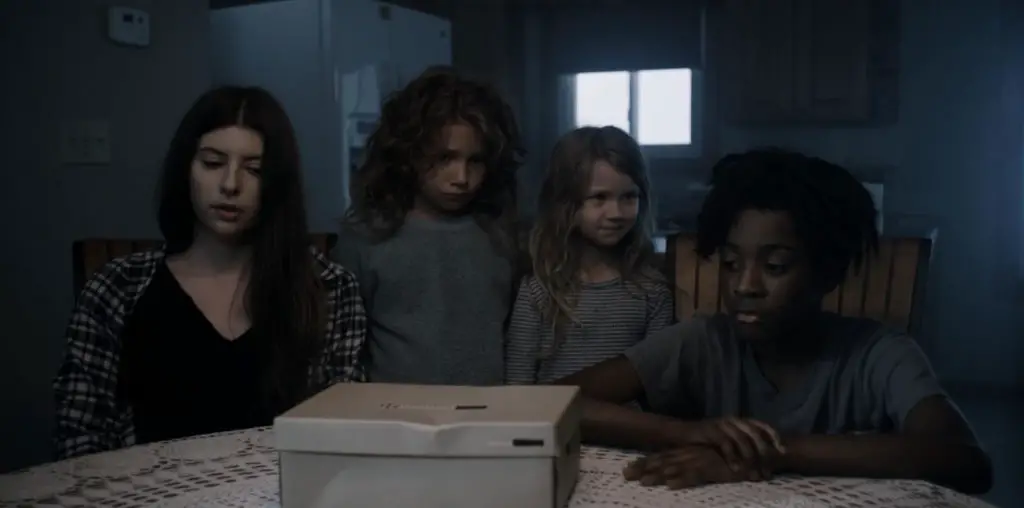
Well, it’s time for Round 2… get ready to rumble. It’s been three years since the brutal, exhilarating “Battle Royale” first bowed amidst a storm of controversy. Those few of us lucky enough to catch it on imported DVDs knew there was no way in hell this great film would ever be officially released in the States. We were right. Sadly, the film remains a rarity here, while “American Idol” freely continues its assault on our senses, the saga of “Bennifer” (still!) makes front-page news, and our pop culture in general is one Big, Fat Obnoxious disaster. Now, you tell me which is more damaging to America’s psyche?!? So, now it’s three years later, and “Battle Royale II – Requiem” has arrived, not in a theater near you or me or anywhere even remotely close, but again via imported DVD. If it meant paying a little extra for shipping and handling, so be it. After experiencing the heady nihilistic rush of the original, I was no way, no how going to miss its sequel, which also happened to be legendary director Fukasaku’s swan song. No way. No how. But the short end of it is that the film, while falling short of the pure impact of the original, is another provocative, audacious bit of filmmaking in its own right. It’s the worst kind of cliché for sequels to claim, “This time its war.” This time, however, it really is.
The original “Battle Royale” wasn’t exactly the kind of film that beckons a “part deux”. You have a remote island where a group of high school kids are forced to kill each other until one remains standing. Okay, so two remained standing. Did we really need to know what happens to Nanahara and Noriko after leaving the island? And how do you make a sequel that avoids simply repeating the original formula and yet still remains faithful? Well, the answers are: yes, we apparently do still care about Nanahara and Noriko and yes, we’re back on an island. But don’t get me wrong, this isn’t the same kind of slavish faithfulness to formula on display in say, “Jurassic Park: The Lost World”. Like I said, this time its war.
“Battle Royale II” literally opens with a bang, or multiple bangs, as two skyscrapers suddenly collapse after explosions rock their foundations. The two towers are immediately followed by several others as the camera zooms out, revealing a nightmarish panorama of chaos and destruction that’s all too familiar to our post-911 consciousness. We don’t know it at the time, but we are witnessing the work of the Wild Seven, a group of teenage terrorists and previous Battle Royale survivors led by a now battle-hardened Nanahara Shuya (Tatsuya Fujiwara). The Wild Seven have inexplicably holed themselves up on a remote island, where they occasionally hack into television satellites and broadcast to the world their declaration of war on all adults. Why the hatred of adults? Presumably because they allow moral abominations like the Battle Royale Act to continue. Ironically though, it is the Wild Seven’s very existence that has prompted the creation of Battle Royale Act II, also know as the “New Century Terrorist Counter-Measure Alternative”. The government is still whisking away teens to their certain deaths, only now instead of killing each other, they are tasked with taking down Nanahara and company. You see, not only does the Man want to punish these young revolutionaries for their crimes, they also want to avoid being bombed by the Big Bad U.S. of A. In a particularly stinging attack on U.S. foreign policy, a “BR II” officer lists all the countries the U.S. has bombed in recent years because of their ties to terrorism. The message is clear: eliminate our terrorist problem and we don’t get bombed. Ouch.
The inaugural class of “BR II” is the 9th grade from a self-professed “school of rejects”. This batch of teens, while not as fleshed out as the first one, does include a particularly interesting student in Shiori (Ai Maeda), the daughter of the teacher/ring leader from the first “Battle Royale”, Kitano (Takeshi Kitano). Shiori so wanted to understand her absentee father that she gladly volunteered to “join the game”, as they say. Yet she, along with many of her classmates, end up understanding the “terrorists” themselves and eventually side with them in their war against the Man.
I must admit I didn’t think it was possible for the plot of “Battle Royale II” to be even more ridiculous than that of the original, but that it was. Reality is clearly not what they’re after here. No, the Battle Royale films are more akin to 21st century cautionary tales, albeit violently over-the-top, slickly produced ones. Though the sequel falls short of its predecessor in terms of shock value and loses most of its steam two thirds of the way in, its still visually thrilling, kinetic filmmaking of almost Shakespearian proportions. (The reason for its jaggedness may be a result of Fukasaku’s sudden death during filming. He was replaced by his son Kenta.) The cinematography is a furious blitzkrieg, especially during a D-Day-style landing that liberally evokes Janusz Kaminski’s brilliant work in “Saving Private Ryan.” The original score by Masamichi Amano is equally as powerful and backs up the action well. But the thing I admire most about this film, beyond just the quality of its production, is the sheer audacity of Fukasaku and company in turning potential exploitation into a searing political manifesto, however murky it might be. In this respect, “Battle Royale II” trumps its predecessor by fearlessly taking on not just the issue of teen violence, but also the more global issue of terrorism and, in particular, America’s response to it. Two subjects that seem strictly verboten in Hollywood these days. (Thank God for Michael Moore!) Fukasaku, you’ll be missed.

